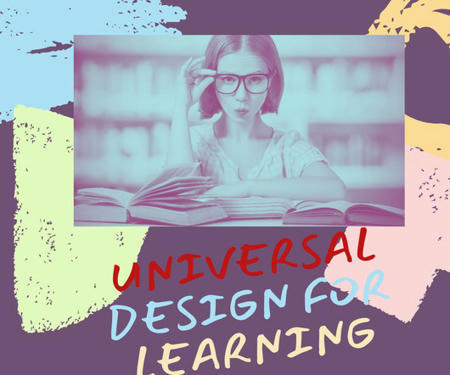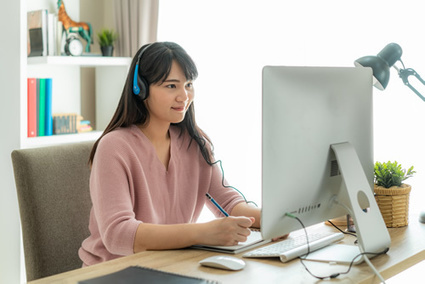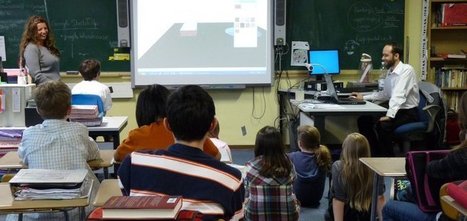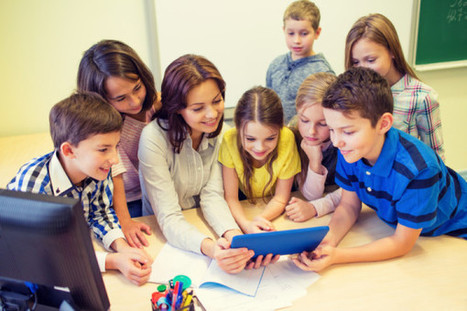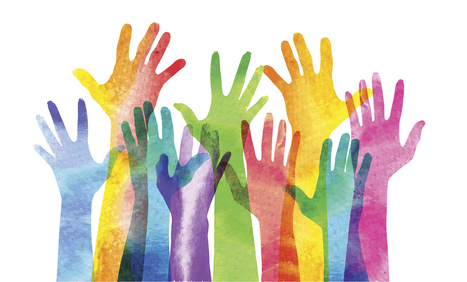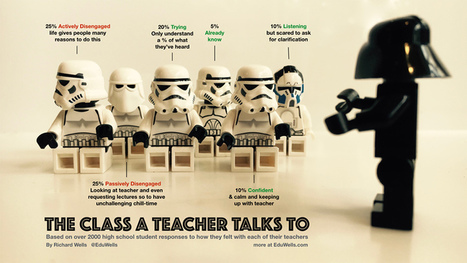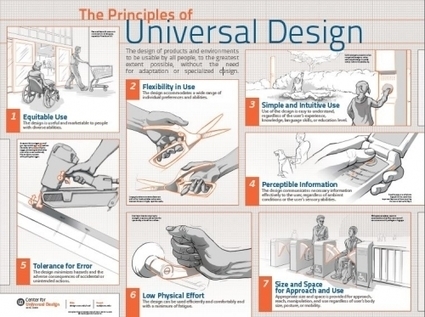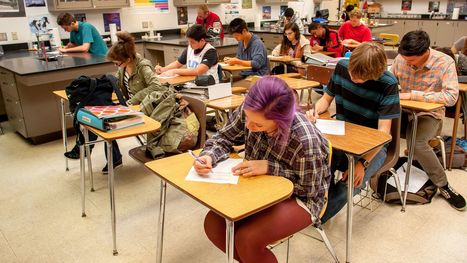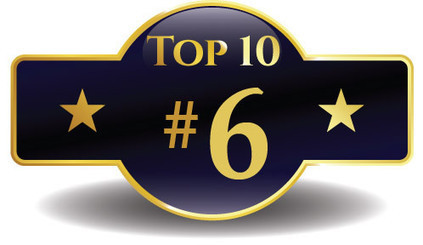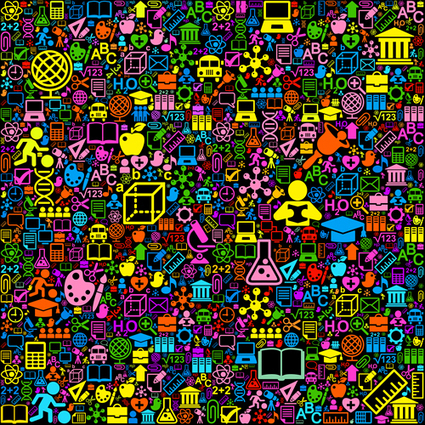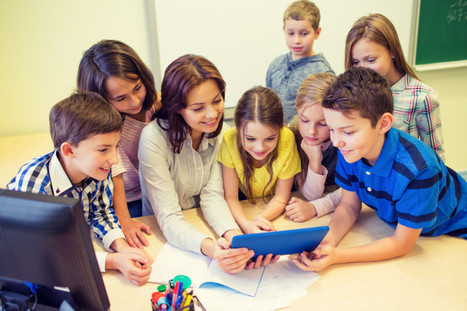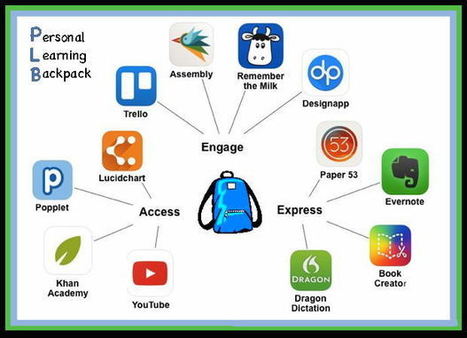 Your new post is loading...
 Your new post is loading...
Best content around UDL Elementary selected by the EdTech Update community.
Even when we teach with consistent, planned strategies, every student experiences instruction in a different way. When we embrace that diversity of experience among our students and recognize that what works for some may not work for others, doors open: We can plan multiple routes for engagement, representation, and expression, which enables more students to succeed. Universal Design for Learning (UDL) is an education framework that helps teachers support students across that span of the student experience. I
The shock has passed, the sadness comes and goes, and the stretchy waistband pants are becoming a mainstay. Your college or university is staying online for the rest of this academic year, as well as summer, and you wonder about fall 2020.
While the trauma of the COVID-19 pandemic persists, it may be time to settle into an educational environment that will be more online than previously imagined.
Warning: You will not get through the same amount of content during this pandemic. Please do not try.
With more choice in how they tackle an assignment, students may be more involved, excited and motivated — and a broader spectrum of abilities are accounted for.
Via EDTECH@UTRGV
In recent years, general education teachers have joined special education teachers in emphasizing the need for inclusivity in the classroom. By creating inclusive classrooms, educators aim to foster learning environments that are equitable and nurturing to every student. Inclusive educators often use Universal Design for Learning (UDL) to provide students with consistent access to engaging content and effective paths for achieving educational goals in classrooms where they experience a greater sense of belonging.
Editor’s Note: Today is Global Accessibility Awareness Day (GAAD) 2018. The purpose of GAAD is to foster conversation, reflection, and learning about digital access and people with different disabilities in order to move towards greater inclusion in technology and its applications. We are pleased to welcome guest author Stephanie Rosen to share some thoughts about accessibility and inclusion for digital textbooks. Stephanie is Associate Librarian and Accessibility Specialist at the University of Michigan Library, where she promotes equitable access to library resources for all users, regardless of ability or background. She holds a PhD in English from the University of Texas at Austin, and brings a background in disability studies to library administration and digital education.
The scholarly communications community is very familiar with the many varied meanings of the word “free” and how those definitions help shape or derail discussions. With recent offerings of “inclusive access” textbooks, we now need to carefully distinguish between the varied meanings of the word “inclusive.”
I have been working on a series of blog posts on digital accessibility for the last several months. This is a topic that is near and dear to my heart, as I am a disabled student and worker in a digital world. I try to advance projects and accessibility in general, and to lead and teach by example. This series has several parts, most focus on insuring that digital material is accessible to adaptive technology such as screen readers. There are also tips and ideas on organization to assist those with pattern and cognitive disabilities, and those with color blindness and low or no vision.
Does the everyday learning environment provide a range of supports to cater for student variability?
Universal Supports are those that exist in the learning environment, which the teacher does not have to think about or plan for daily. Thus, saving teachers time and energy.
They typically support Finance Assignment Help which are common to several learning activities. Universal Supports include the physical, emotional, and learning environment in the classroom as well as well-established systems and protocols that are so embedded they are simply ‘the way we do things around here’.
There are several reasons why Universal Design is the model most Higher Education Disability service providers in North America are turning to. These include the need to manage resources of rapidly expanding service demands, building a more sustainable model of service provision, responding to the increasing complexity and diversity of diagnostic labels, its use of inclusive practices, and its foundation on a social model of disability.
Something remarkable has happened in the past decade. New discoveries about the workings of the learning brain have converged with advancements in educational technology to finally make possible the kinds of flexible learning environments that students need to prepare for their future.
According to the Universal Design for Learning (UDL) framework, flexibility is key because it allows educators to accommodate their students’ natural variability in learning styles and preferences. While UDL is not just about technology, this idea is at the heart of how technology can make personalized learning a reality.
Universal Design for Learning (UDL) is a framework for designing educational environments that enable all learners to gain knowledge, skills, and enthusiasm for learning.
UDL theory (universal design for learning) can help embed a personalized approach to the instructional design process.
Via EDTECH@UTRGV
|
The Universal Design for Learning (UDL) framework allows us to understand the importance of utilizing web 2.0 in teaching and learning. Social annotation tools such as Hypothes.is allow teachers to fulfil the three essential UDL components: engagement, representation, and action & expression through thoughtful use of the platform. Social annotation tools such as Hypothesis and Voice Thread, when used well, boost student engagement, enhance critical thinking, expand reading comprehension, and increase student interaction. Of the several social annotation tools currently available, our institution uses Hypothesis. Hypothesis’ motto—“Making reading active, visible and social”—sums up why we think social annotation is so valuable for our students: it engages students and invites them to read and think together as a group by sharing real-time annotations of websites or PDFs (Hypothesis, 2021). The richly multimodal, interactive nature of Hypothesis offers instructors a platform through which they can employ the principles of Universal Design for Learning (UDL) to improve engagement and accessibility for all learners.
Tapping into elements of Universal Design for Learning may help teachers create fairer and more reliable tests.
Via EDTECH@UTRGV
How UDL can be used to provide all students an equal opportunity to learn, at any grade level or subject area In recent years, general education teachers have joined special education teachers in emphasizing the need for inclusivity in the classroom. By creating inclusive classrooms, educators aim to foster learning environments that are equitable and nurturing to every student. Inclusive educators often use Universal Design for Learning (UDL) to provide students with consistent access to engaging content and effective paths for achieving educational goals in classrooms where they experience a greater sense of belonging.
Universal Design for Learning (UDL) is a framework that guides the design of courses and learning environments to appeal to the largest number of learners. It emphasizes flexibility in how instructional material is presented, how students demonstrate their knowledge and skills, and in how they are engaged in learning.
The principles of multiple means of engagement, representation, and action and expression offer instructors an instructional design model to strive for equitable access for all students by offering options, flexibility, and sets goals to accommodate diverse learners regardless of the discipline. In addition, UDL prompts instructors to consider how they might improve their own teaching practice by considering diversity in the classroom, student voice and agency.
Quick Take: Author, speaker and professional consultant in accessibility/Universal Design for Learning shares his thoughts on inclusive educational design practices.
How UDL can be used to provide all students an equal opportunity to learn, at any grade level or subject area.
“Productivity is never an accident. It is always the result of a commitment to excellence, intelligent planning and focused effort.” — Paul J. Meyer, premier international authority on goal setting, motivation, time management, and personal and professional development Accessibility is not the first item we consider when we start designing a website. It is often a hidden need that we don't think about until something goes wrong. For example, let’s say you are in the middle of a desig
When it comes to copyrights, do you know the difference between material you create for your class and material you are contracted to create for a class? Who owns the rights to that material? According to copyright law, can you use a student’s paper as an example in future classes? These are some of the questions Thomas Tobin, PhD, answers in our interview conducted at the Teaching Professor Technology Conference this past weekend in Atlanta.Read more PA020: Copyright and Universal Design for Learning, An Interview with Dr. Thomas J. Tobin ›
Via EDTECH@UTRGV
Once a learner has indicated their strengths, challenges, and interests along with their preferences and needs in the Learner Profile (LP), then the teacher can work with the learner to develop a Personal Learning Backpack (PLB).
We are particularly interested in considering how assistive technology can be used to support the literacy achievement of all students, an area not frequently examined in the scholarly literature. In this article, we discuss the range of assistive technology tools available to students and teachers from a Universal Design for Learning (UDL) perspective, wherein strategies, resources and tools are incorporated with the needs of all students in mind.
|
 Your new post is loading...
Your new post is loading...
 Your new post is loading...
Your new post is loading...







